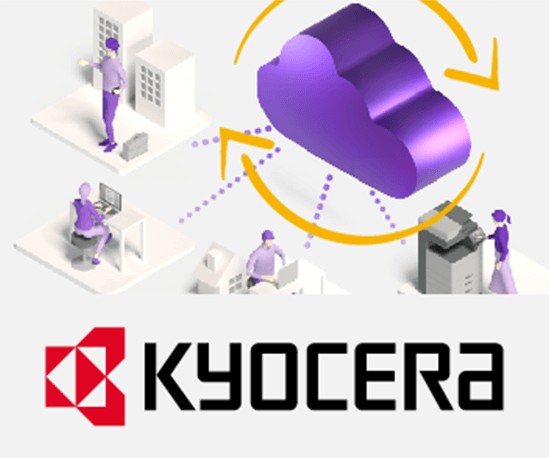

13 December 2021
Why multilingual ECM matters and how to actually do it
by Viola Ganter
Among the most common international surnames, you will find names like “Jónsdóttir” (Iceland), “Müller” (Germany), and “Satō/佐藤” (Japan). Each of these names contains letters that are not found in the English alphabet. Meaning: Every person with that name will at some point in their life have had issues filling out an online form.
Multilingual software development is only just starting to catch up with a highly interconnected global market. What seems like a mere nuisance for individuals becomes a major challenge for enterprises with a linguistically diverse staff or customer base. From web interfaces that can’t display characters to search engines that cannot understand the syntax of a query – global companies have their work cut out for them when it comes to multilingual enterprise content management.
Why do we need multilingual ECM?
Global trade has grown exponentially in the last century, and with it the need to manage companies across country borders. Exported goods make up close to 25 percent of the GDP worldwide, and about 30 percent of the value of global exports come from foreign inputs, leading to increasingly complex and globalized production chains. This means, invoices, waybills, customs declarations, hotel bills, and many more need to be made accessible across the world, while both staff and customer base become more and more linguistically diverse.
Less than 20 percent of the world’s population speaks English
While English is currently the most widely spoken language on earth, with as much as 1.35 billion people having at least a rudimentary understanding of the language, this still amounts to less than a fifth of the worldwide popuplation. When it comes to first-language speakers, the number is as low as 360 million, with Mandarin being the most common native language in the world.
To be effective in a multinational firm, a content management system must be able to
- process data in any language,
- have a multilingual user interface, and
- have workflows that can handle numerous user-interface languages.
What are the challenges of multilingual software development?
With the history of software development being mostly rooted in the UK and US, it is no surprise that the predominant language of the tech world has been English. But even though information technology has long since spread over the entire globe, multilingual software development has had a much more reluctant start. In part, this may be attributed to lack of awareness in monolingual programmers, who may not be familiar with the specifications of other languages. But mostly, programming for multiple languages has proven challenging on a technological level.
Scalability
While the English language can be captured perfectly with a lightweight one-byte character encoding (Latin-1), other languages need UTF-8 or UTF-16 to be displayed correctly, which can take up up to four bytes per character. In other words: Multiple alphabets are data heavy and much less efficient.
Thankfully, as the tech world is becoming increasingly big-data-savvy, this issue is starting to become a thing of the past, with microservices-based software architectures allowing processes to be scaled independently of one another.
Prolonged software release cycles
Translating entire systems into another language can be extremely time-consuming and costly as any text, any label, any error message must be recoded. Not to mention any language processing that might be going on within the software’s algorithm itself (syntax parsing, synonym search, topic modelling, to name a few).
This is especially true for clients with hard-coded user interfaces, where any feature update must be duplicated, tested, and rolled out for any additional language. A solution comes in the form of browser-based interfaces, which have gained popularity in recent years: Placeholders are used to display the right language for the right user. Only one software version is needed, and any texts are stored in a separate database.
Translation cost
This is not a technological challenge in and of itself, but it does have an impact on budget distribution. The more difficult it is to alter an interface, the more important error-proof translations become. Typically, this entails hiring a professional translator to translate and test the entire interface.
Again, working with placeholders is the answer here. The more flexibly an interface can be adjusted, the less pressure lies on its translations, meaning a prototype can be rolled out much faster and adjusted when necessary. This lowers both translation costs and time to market.
Reducing translation costs is one of the areas where no-code/low-code solutions really shine. If a company has a linguistically diverse staff, why not utilize that? No-code customization enables employees to design an interface based on their own needs and hence use their own words.

The cornerstones of great multilingual ECM
Putting it all together, these are the key features for enterprise content management systems in linguistically diverse settings:
- Flexibility. The more the better. Modularized software architecture allows for isolated changes without having to translate the entire system. Placeholders make it much easier to change interfaces than hard-coded text. No-code interfaces allow users to enter translations without involving the IT department at all.
- Scalability. Dealing with more languages means dealing with more data. A microservices-based software architecture scales tasks independently and is therefore great for handling data-heavy character encodings.
- A kick-ass search engine. It can save employees a great deal of frustration if they can quickly find what they need. Efficient indexing, natural language processing, synonym-, and fuzzy search, are all part of what makes for a great search engine and need to be handled across multiple languages and alphabets.
- A way to harness the employees’ language skills. Low-code/no-code interfaces are ideal for flexibility as well as tapping into the knowledge of multilingual employees. Allowing them to use their own words reduces both translation costs and time to market.
Bottom line
Multilingual ECM can seem daunting, but it is becoming increasingly important as markets become more and more interconnected. However, a wisely chosen software architecture makes life much easier. Flexibility, scalability, a multilingual search engine, and the ability to harness the linguistic diversity of a company’s employees are the key features to managing enterprise content around the globe.
Globalize enterprise content management now
Our technical whitepaper offers insights about:
- Open standards
- Microservices architecture
- Framework concept
- Overview of services
- Modeling and customization tools
- Microsoft integration
